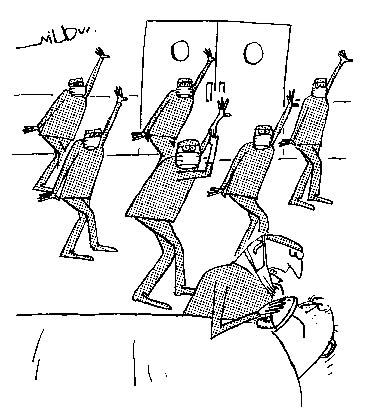The skies are brightening over Warwickshire, where they breed Aston Martins. The recession reduced staff from 1,200 to 900 but now they’re back up to 1,000 and are opening a dealership in — of all places — Dublin. After spending almost a century in the red, they’ve finally nudged into profit under the leadership of Dr Ulrich Bez. If asked by a friend to let him have an Aston at cost price, Dr Bez need no longer reply by quoting former owner David Brown: ‘You couldn’t possibly afford that. It’s cheaper in the showroom.’
It takes about six weeks to make one, which includes 50 hours’ paintwork and 70 to do the trim. Yet it took just 19 months from designer Marek Reichman’s first sketch to delivery of the new Virage, launched in Spain last month. The flexibility of Aston’s VH platform helped, of course, but so does being a small company with a fairly flat management structure.
Priced midway between the £125,000 DB9 and the £175,000 DBS, the Virage grew out of a what-if conversation between Bez and Reichman. They wanted a car that was a more refined, more Rapide-like, less aggressive version of the DBS but with more power than the DB9. The result is a more beautiful and more complete car than either and its future, I suspect, is to eclipse one or both.
It looks similar to the DBS, though new wings and a new front end give it cleaner and more elegant lines. Everything about the design suggests power and movement, like a crouched sprinter. There are no flat surfaces and the eyebrows above the Rapide-derived headlights combine with the side-strakes to draw your gaze rearwards. It’s all movement and flow, a design without full stops. Reichman makes good use of the car designer’s ‘golden section’ — the two thirds/one third ratio between body and bonnet, length and height etc. — along with several discreet structural triangles suggestive of stability and strength.
Inside, all that glisters is real metal (gold is presumably available by special order), and what look like glass switches are. The Bridge of Weir leather seats are supportive and considerate, though the rears are best left for dwarfs. The six-speed ZF auto is precisely and instantly manipulated by paddles or dashboard buttons. It’s good to see the latter again — V8 Bristols used them until about 1968, when US legislation compelled a reversion to the clumsier, floor-mounted column change. In the Virage, however, one dashboard button turns out to be an Aston Martin pen (€90 if you lose it, we were warned). You also get a top speed 186mph, 0–62mph in 4.6 seconds and an umbrella in the boot. The chassis is the usual bonded and extruded aluminium, with stiffness added by bolting the rear subframe straight on to the car, rather than attaching it via bushes, as with the DB9.
It goes — well, how would you think? With great power and without apparent effort. Also with an exhaust note that beguiles as much as it blasts. Overall, it’s a civilised, well-mannered car, more grand tourer than raucous sporty, although on the winding hill roads outside Ronda you can do sporty enough to frighten yourself and everyone else.
By way of contrast we went straight from road to track, this time with a street fighter, a real bruiser. The Vantage S is the latest iteration of Aston’s V8 entry model. From launch in 2005 I’ve liked this car, a solid, well-grounded, meaty beast that drives as it looks but is usable every day. For the S version they’ve upped the V8 to 430bhp and 361lb.ft, honed the steering rack, put in new springs and dampers and, most importantly, endowed the automatic Sportshift with paddles and seven short ratios. The result is quicker changes at all speeds up to 189mph and more precise control. It’s now virtually a road version of Aston’s successful GT4 endurance race car.
The Ascari race track is said to comprise corners from tracks throughout the world that its Dutch owner found ‘interesting’. In 30 hectic minutes in the Vantage S I found them more than interesting, especially the one with a gradient that feels as though it’s flinging you off right then ducks sharply down left. No sooner have you landed than you’re into the next one.
Despite the benefits of paddle-shift, I missed the chunky manual gear change of the entry model, but that’s more personal preference than complaint. If you were driven blindfold in the Virage and Vantage S you’d know you were in Astons, though they’re very different experiences. So which should Mr Bond drive in his next film? Both, surely, with a companion to match each.






Comments